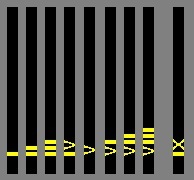|
What is Taekwon-Do?
Taekwon-Do contains many different elements that are broadly classified into kicks, punches and blocks. There are additionally throws and grappling techniques, joint-locking methods, and various striking and thrusting techniques which utilise many parts of the body in effective self defence. A central element of Taekwon-Do are its 24 Patterns (Tul) which are learned as a student progresses through the ranks. Patterns are sets of various fundamental movements, both offensive and defensive, against an imaginary opponent. These are performed in a fixed and logical sequence to help the student to develop correct technique, balance and precision.
|
|
|
Moral culture is also a fundamental part of Taekwon-Do with emphasis placed on courtesy to others and self discipline in behaviour. This is embodied in the five Tenets of Taekwon-Do:
|
|
|
Brief History Who is Taekwon-Do for? Children greatly enjoy Taekwon-Do training because of its high level of focused activity. They tend to develop increased physical coordination, discipline and concentration which carries over into their other activities at school and elsewhere. Taekwon-Do emphasizes hard work and courteous behaviour from students without sacrificing fun and enjoyable training. Many people with disabilities study Taekwon-Do and gain greatly from it because training is flexible and geared to ability.
|
|
|
What does Taekwon-Do offer you? Training in Taekwon-Do is very enjoyable and can bring with it a range of benefits: Self defence skills – You will learn basic and advanced offensive and defensive skills which will increase your ability to defend yourself from attack by one or more opponents. Significant training time is spent on defending against knives and other hand weapons, and against multiple opponents. Moral code – Courtesy and respect toward others is an important part of training. Mental and spiritual development goes hand-in-hand with physical training in Taekwon-Do. Improved health & fitness – Taekwon-Do sessions contain cardiovascular workouts, callisthenics, endurance training and all over strength development. This promotes weight loss, muscle development and suppleness. Confidence and self discipline – Almost all people training in Taekwon-Do say that their confidence has improved and that this positivity extends beyond training into other areas of their lives. Social interaction – Getting the most from Taekwon-Do is often about group spirit and team working with other students to develop your skills. Mutual encouragement and the intensity of training makes for a friendly and positive class environment.
Classes
Gradings
Taekwon-Do belts are: White – Yellow – Green – Blue – Red – Black. Each colour belt has one stage in between called a “tag” and black belts are graded from 1st to 9th Dan. Typical time from white belt to 1st Degree black belt with regular training is 4 years.
Competitions and Events
There are also various special seminar events held during the year such as weekend and even week-long summer camps where the full breadth of Taekwon-Do is taught by highly experienced instructors and World champion competitors. Sometimes these events focus on particular aspects like sparring, patterns or grappling, and sometimes it is more general training – and lots of it! |
|




